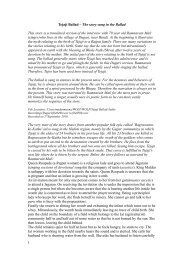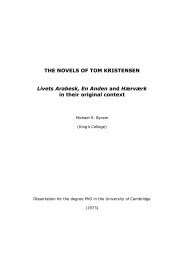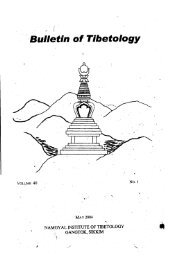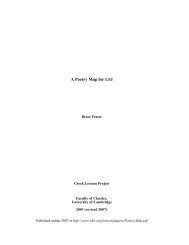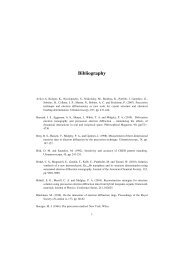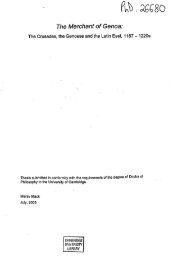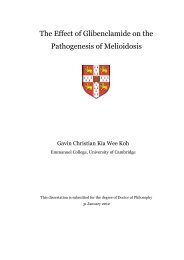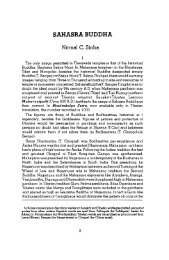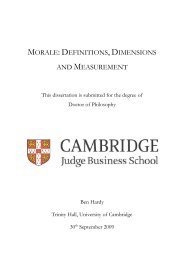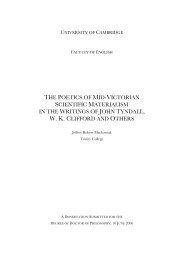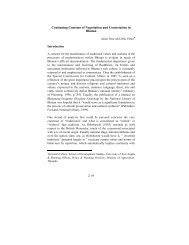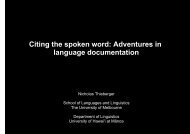Hinayanism
Hinayanism
Hinayanism
Create successful ePaper yourself
Turn your PDF publications into a flip-book with our unique Google optimized e-Paper software.
fications for its followers by opening the church alike to<br />
the monks as to the householders. By its new ethics, centring<br />
around the Boddichitta and the six paramitas (perfect virtues),<br />
namely, dana, sila, ksanti, virya, dhyana and prajna and<br />
accessibility of Bodhi-sattvahood for all, it struck a tactical<br />
victory over <strong>Hinayanism</strong>. The main difference between<br />
<strong>Hinayanism</strong> and Mahayansim, however, would be the realism<br />
of the former and the negativism or idealism of the latter.<br />
The philosophy of the creed centred around Sunyavada of<br />
which a great exposition had been given in the Madhyamika<br />
doctrine of the celebrated southern monk Acharya<br />
Nagarjuna of the Mahayana school, who should be historically<br />
placed in the middle of the 2nd century A. D. As regards<br />
worship, Mahayanists presented offerings to Tara (Prajnaparamita),<br />
Manjusri, and Avalokitesvara. The accounts of Fa-hien<br />
(c. fifth century A. D.) and Hiuen Tsang (seventh century<br />
A. D.), would tend to suggest that <strong>Hinayanism</strong> in its main<br />
schools of Sarvastivadins, Mahisasakas. Theravadins, Sammitiyas<br />
and Mahasangikas prevailed for quite some time, along<br />
with Mahayana development of the Madhyamika and Yogachara<br />
schools, and among the southern centres are named the<br />
already famous towns in the Andhra country in the Guntur<br />
area like Nagarjunakonda, Goli, Gummididuru, Ghantasala<br />
etc., and Kancipura in Tamilnad. It is interesting to note<br />
that Aryadeva who succeeded Nagarjuna, as his disciple and<br />
one of the four luminaries of India, held charge of Nalanda<br />
as its chief Abbot for many years and is said to have<br />
retired to Kanchi towards the close of his life and passed<br />
away there in the second century A. D. He wrote the<br />
treatise Chatuhsataka.<br />
Buddhapalita was another Mahayana monk from the<br />
South who wrote a commentary on the Mulamadhyamika<br />
sutra of Acarya Nagarjuna. Bhava Viveka, again from the<br />
south, wrote an independent treatise called Tarka Jvala and<br />
essentially followed in all his works the method of Svatantrika,<br />
(direct reasoning) as different from Buddhapalita's method<br />
of Prasangika (reductio-ad-absurdum) on the lines of those<br />
of Nagarjuna and Aryadeva, in treating the thesis of Sunyata.<br />
Another Chandrakirti, also from the south, was again the<br />
Abbot of Nalanda and in his travels in the south he<br />
defeated many teachers in the Konkana tract (from where<br />
he came) and established many monasteries. Of the Yogacara<br />
scholars of Mahayana Buddhism, Vasubandhu is doubtless<br />
the most famous and had a very long career at Nalanda<br />
and counted among his pupils Dinnaga who was originally<br />
12



